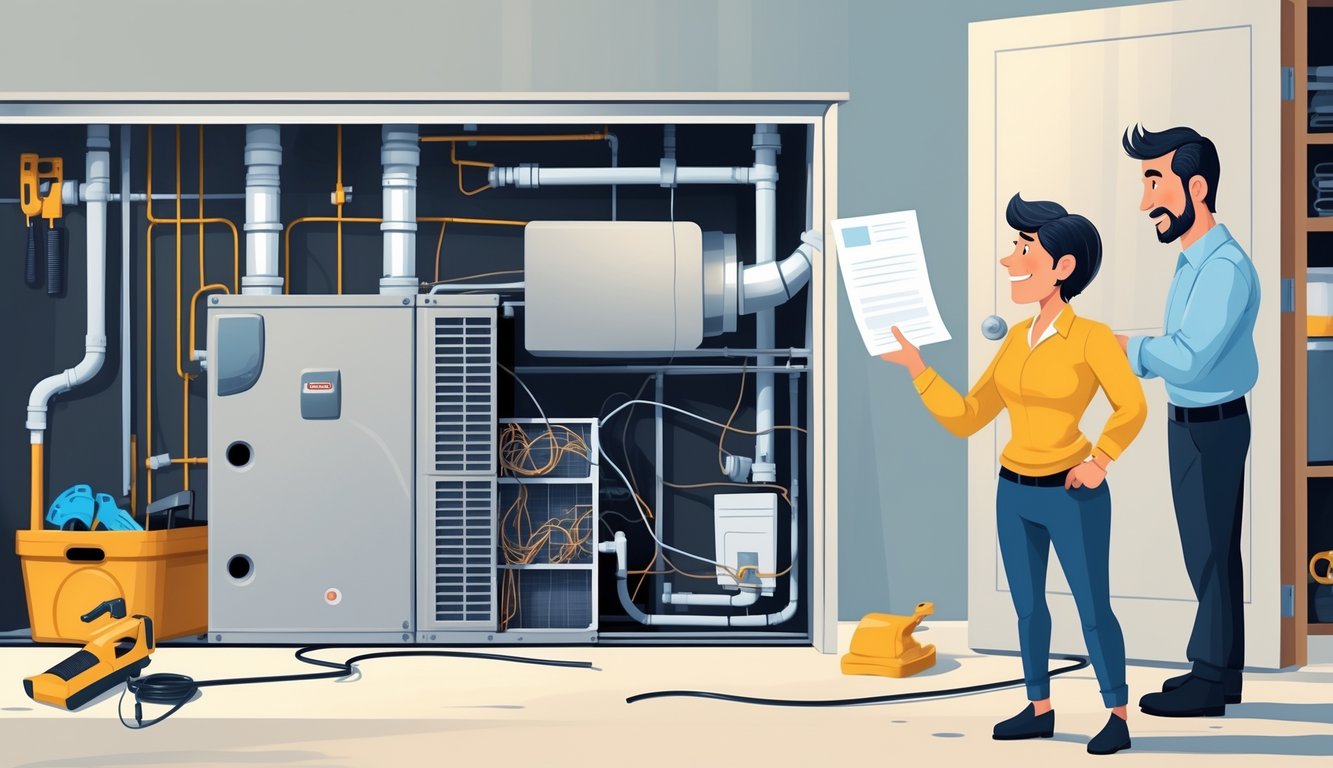
Consequences of Refrigerant and Coil Neglect
Repair bills spike, equipment strains, and suddenly there’s ice on the coils—good times. Leaks and filthy coils don’t send warnings; you just notice when the bill’s huge or the AC hums uselessly.
Refrigerant Leaks and System Strain
Last summer, my neighbor’s house “felt sticky” even with the AC blasting. Classic refrigerant leak. Most people don’t notice until it’s expensive. Bills spike, humidity goes up, and the “cooling” system just makes puddles and ice. Energy.gov says low refrigerant cuts efficiency by 20%. Nobody advertises that.
EPA-certified techs warn: bad recharge or ignored leaks can kill a unit early. Miss the leak, and the compressor works overtime until it dies. You might see oily residue if you check, but who checks unless the living room’s a sauna?
Dirty and Clogged Coils
Trying to cool with dirty coils is like running with a nose plug. I’ve pulled filters that looked like wet wool socks from “new” systems—dirt builds up fast, airflow tanks. Carrier and Trane techs say dirty coils drop efficiency by up to 30%. No warning, just slow failure.
Coils get grimy, AC works harder, bills climb. Sometimes there’s frost, sometimes just weak air and weird smells. Neglected coils wreck compressors. I know people who skipped maintenance to “save money” and ended up paying thousands for a new coil and compressor—insurance didn’t care.
Compromising Energy Efficiency and Comfort
Sweating for no reason, feet freezing at 72°F, and the bill looks like a second mortgage. Energy efficiency? In theory, easy. In reality, unchecked mistakes mean less comfort and, if you’re really lucky, a nice patch of mold somewhere you can’t see.
Reduced Efficiency and Higher Costs
Honestly, I still can’t believe how fast my “energy-efficient” HVAC system eats up electricity. Like, I skip a $10 air filter once and suddenly the thing’s humming all night, chewing through kilowatt-hours. My neighbor keeps ranting that programmable thermostats are a scam—says if you set them wrong, you’ll just end up with the system cycling nonstop, killing the compressor and draining your wallet. Is he right? I don’t know. Maybe.
Had a technician come over once, just stared at my ductwork and sighed. “You’re losing 30% of your cooled air,” he said. U.S. Department of Energy backs him up, apparently. So, yeah, I ignored those loose ducts, didn’t bother with a tune-up, and now the compressor sounds like it’s grinding itself to death. Oh, and the thermostat? Stuck in the sunniest part of the hallway, so the AC kicks on every time a cloud moves. Next time, I swear I’m putting it on an interior wall, away from vents, away from sunlight—if I remember.
People keep saying, “Get a new, efficient unit, it’ll solve everything.” But if you don’t fix the controls or skip maintenance, it’s basically pointless. Indoor air sucks, efficiency tanks, and my patience? Gone.
Excess Humidity and Mold Consequences
Ever walk barefoot across tile in June and your foot sticks? Yeah, that’s what happens when the AC short cycles. Oversized systems shut off too fast to actually dehumidify anything, so you’re left with sticky, muggy rooms. The EPA and CDC keep shouting about humidity and mold, but nobody cares until the place smells like a swamp. Ask my cousin—she ignored a clogged drain pan for weeks, and suddenly the baseboards were crawling with black mold.
Mold’s a nightmare. Messes with my allergies, makes the air feel gross. I tried a dehumidifier, which cost way too much, but that only hides the fact that the HVAC system is badly designed. Maintenance guys always toss out, “Keep humidity under 60%,” but never tell you how. Even missing weather stripping on the attic hatch wrecks comfort, and the bills just keep climbing while the air gets thicker. I’d rather scrub the air handler every month than deal with a musty mess insurance won’t touch.